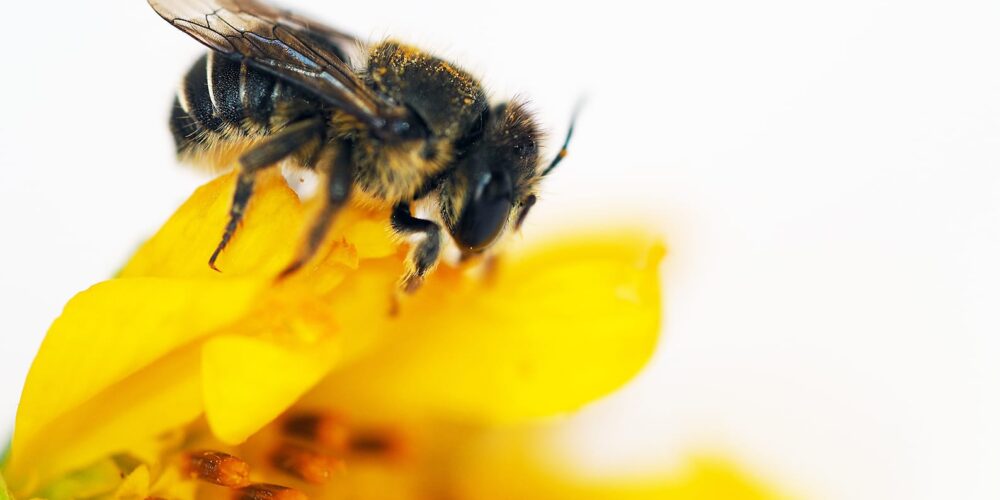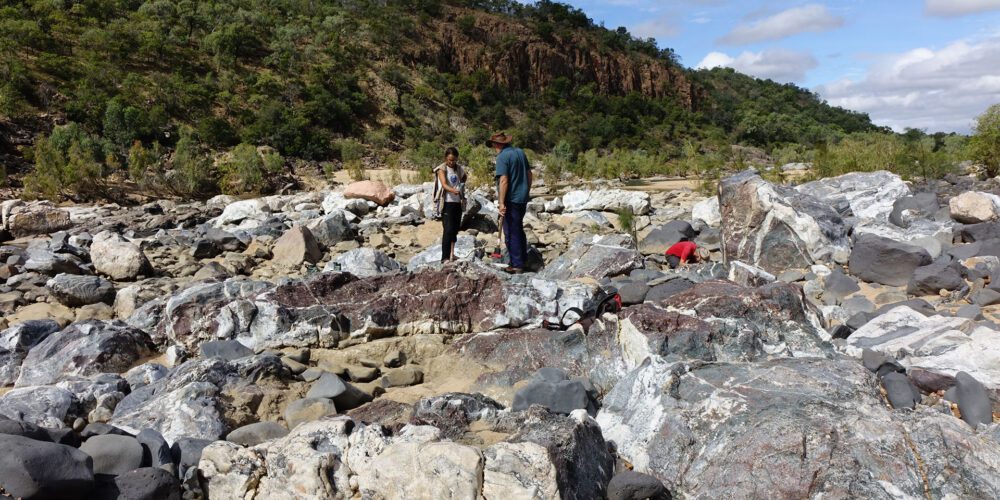Curtin research finds first African carder bees to reach Western Australia

Curtin research has recorded the first known appearance of Pseudoanthidium (Immanthidium) repetitum, the African carder bee, in Western Australia and has highlighted the need to closely monitor the impacts of such introduced species on the ecosystem.
Published in ‘Pacific Conservation Biology’, the research documented the first WA sightings of the bee, which was first recorded in Australia in 2000 in Queensland, before rapidly spreading down the east coast and by 2015 becoming a common inhabitant of urban gardens in Victoria.
Author, Curtin PhD candidate and Forrest Foundation Scholar Miss Kit Prendergast, from Curtin’s School of Molecular and Life Sciences, said the first occurrences of the species in WA, represented a major expansion of the distribution of the species.
“So far there are three confirmed and one unconfirmed site where this species has been seen, all in residential areas of WA’s Mandurah region,” Miss Prendergast said.
“Female specimens were collected from a garden in the Mandurah suburb of Halls Head, where it was seen to be abundant and with other bees, both native and the introduced European honeybee, foraging alongside it.
“Given the sheer distance across the continent, the bee may well have made its way to WA with human-assistance and the fact it has been recorded only in Mandurah, a major port, suggests it may have arrived by boat.”
Miss Prendergast said the bee’s presence in WA remained rare and localised but given the known negative impacts of introduced species on native fauna and flora, especially in Australia, the impact of such introduced species needed to be carefully monitored.
“While the bee could currently be considered benign, introduced species can be ‘sleeper’ species, and go through a lag phase, following which they become an environmental or economic pest, meaning ongoing monitoring is required,” Miss Prendergast said.
“African carder bee nests are easily distinguishable from those of native bees and are made from hair-like plant fibres that females scrape from leaves and stems and roll into balls, with the nest resembling a mass of cotton wool.
“Unlike native Australian bees, which all are solitary nesters, the African carder bee nests communally, where masses of brood cells from multiple females are found in the one place.”
Possible sightings of the small black and white-striped bee or its nests, often found in electrical meter boxes, can be reported to Miss Prendergast’s Facebook page Bees in the burbs.
The full paper, First records of the introduced African carder bee, Pseudoanthidium (Immanthidium) repetitum (Hymenoptera : Megachilidae), in Western Australia, can be found online here.



